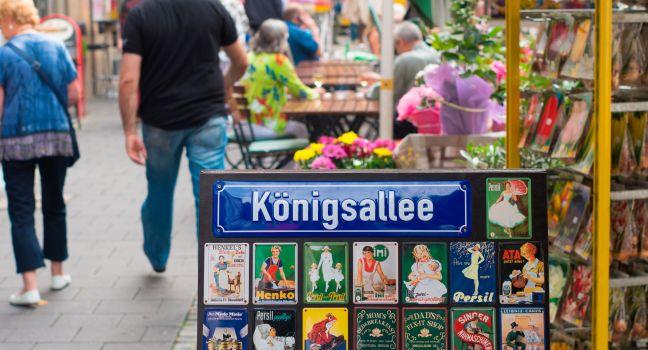Königsallee

Düsseldorf's main shopping avenue is a nearly mile-long stretch of designer boutiques and stores, including the Daniel Liebeskind-designed Kö-Bogen shopping mall at its northern tip. Known as "the Kö," this wide, double boulevard is divided by an ornamental waterway fed by the River Düssel. Rows of chestnut trees line the Kö, shading a string of sidewalk cafés.



